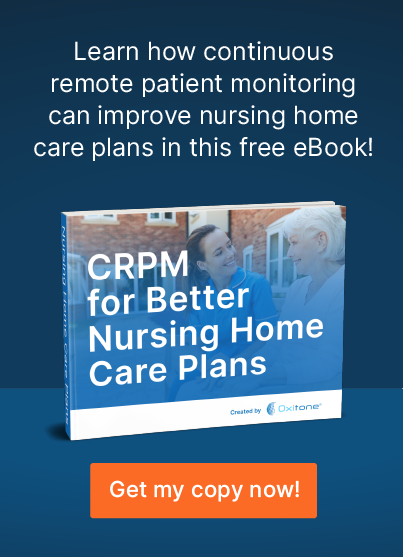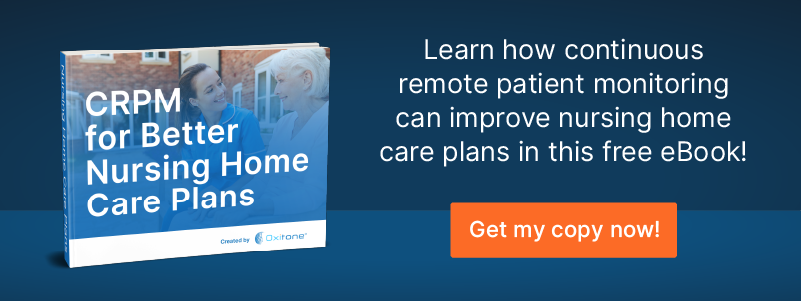Chronic disease patients are part of a high-risk population whose health and safety are of the utmost concern to the doctors who treat them. With six in ten American adults suffering from a chronic disease, it’s imperative that doctors can monitor and manage the risks associated with treating these patients. They often require continuous monitoring to ensure a prompt response to acute events and to prevent medical emergencies from becoming fatal. When it comes to saving these patients’ lives, real-time patient monitoring systems can play an important role in reducing the risk of mortality.
Real-time patient monitoring systems allow doctors to provide around-the-clock care to chronic disease patients with fewer interruptions. With wearable continuous remote patient monitoring technology, you, as their physician, can respond faster to potential emergencies, allowing your chronic disease patients to spend less time in the hospital and more time enjoying their lives at home.
How Real-Time Patient Monitoring Systems Save Lives
1. Continuous Care
Traditional patient monitoring relies on episodic events and patient self-report measures, leaving gaps in data collection. The consistent stream of data from real-time patient monitoring technology aims to fill in those gaps in your patients’ care.
Real-time patient monitoring systems like Oxitone allow for constant observation of vitals, including SpO2 and heart rate. As a result, chronic disease patients receive better care with fewer interruptions.
However, many doctors have concerns about the accuracy of the data provided by real-time patient monitoring systems. The FlexSense technology used in Oxitone’s wearable continuous remote patient monitoring system was designed to solve that problem.
Oxitone uses sensor technology to mold to the shape of the wrist, providing more accurate data for doctors to base their clinical decisions on. You’ll be notified when a patient’s vitals differ from baseline, letting you monitor thousands of patients at once without an excessive workload or burden on your staff.
2. Early Detection
Many chronic disease patients require continuous monitoring to ensure that they do not suffer complications. This can include a wide range of measurements that can be challenging for one doctor to collect and monitor at once.
Real-time patient monitoring systems like Oxitone collect a broad spectrum of data with one easy-to-use tool, improving your ability to care for chronic disease patients with complex medical needs.
The constant stream of data provided by real-time patient monitoring systems adds predictive value to patient monitoring, allowing doctors to anticipate exacerbations and acute events before they happen. You’ll be notified whenever your patient’s vitals differ significantly from baseline, allowing you to take action to prevent emergencies.
As a result, patients spend less time in the hospital and have lower mortality rates. The data collected by real-time patient monitoring systems can also be used to predict future events, reducing the rate of readmission.
3. Rehabilitation
The transition from hospitalization to home care presents myriad risks for patients and doctors alike. Continuous remote patient monitoring helps monitor the risks and health statuses of vulnerable patients during this period of transitional care.
Using real-time patient monitoring, you can better follow up with and keep track of high-risk patients after they leave the hospital. In return, high-risk patients have better access to around-the-clock care when they need it, without having to call an ambulance to have their medical needs met.
With continuous remote patient monitoring, patients don’t need to stay in the hospital for lengthy monitoring after an acute event nor rely on their doctors to follow up with them by phone or via in-person appointment. Instead, they can trust that their wearable real-time patient monitoring system will provide their doctor with a steady stream of data that allows them to respond to potential exacerbations or complications before they happen. This alleviates patient anxiety during the rehabilitation process and decreases your workload as a clinician.
The added predictive value of the data collected by Oxitone and other continuous remote patient monitoring systems reduces the likelihood of readmission during this transitional period of care, keeping chronic disease patients out of the hospital longer and allowing for a better quality of life.
The lower risk of readmission is also beneficial to hospitals by reducing the $41.3 billion in healthcare costs associated with thirty-day readmission rates. For hospitals, that means more money that can be spent taking care of other patients—and saving more lives.
4. Quality of Life
Chronic disease is a significant source of stress for patients. The burden of chronic stress on physical and mental health is well-documented in medical literature. For chronic disease patients, this stress can be the difference between life and death.
Acute stress from an emergency or hospitalization can compound the effects of chronic disease on physical and mental health, resulting in adverse patient health outcomes. In one study, cardiac patients with high-stress personalities reported worse outcomes than patients with less stress.
Continuous remote patient monitoring systems increase patients’ well-being by enhancing their quality of life, improving the quality of care that they receive, and reducing the costs and risks associated with that care.
Real-time patient monitoring systems offer chronic disease patients greater peace of mind, allowing them to spend less time worrying about potential exacerbations or hospitalizations and more time living their lives to the fullest. Research shows that COPD patients—who typically require intensive care for severe exacerbation—reported reduced symptom anxiety with the use of wearable real-time patient monitoring technology.
In the unlikely but unfortunate event that a patient’s life cannot be saved, continuous patient monitoring can create a greater sense of ease during end-of-life care. Real-time patient data can play an important role during this critical stage, as doctors and caretakers decide whether to admit the patient to the hospital.
Here at Oxitone, we boost value-based healthcare by delivering extraordinary patient, clinical, and economical outcomes at reduced medical utilization and cost. Patients need a prompt response to emergencies. Physicians need an easy and timely follow-up with patients. Our mission is to transform chronic disease management and help save lives worldwide.
Let’s save lives together! To see how we help remote patient monitoring companies and physicians improve the management and care of high-risk patients, contact us today!


